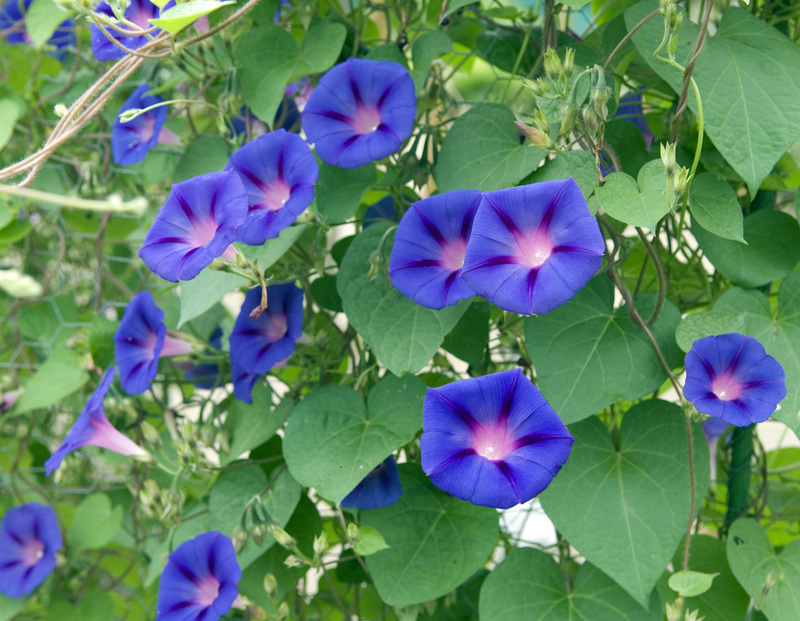Year-Round Lawn Care: Tips for Keeping Your Grass Healthy During Every Season
Posted on 18/09/2024
A lush, green lawn is the pride and joy of any homeowner. It not only enhances the curb appeal of your property but also provides a beautiful space for outdoor activities and relaxation. However, maintaining a healthy lawn all year round requires dedication and proper care. Each season presents its own set of challenges that can affect the health of your grass. In this article, we will discuss some essential tips to help you keep your lawn healthy throughout the year.
Spring
As winter fades away and spring approaches, it's time to prepare your lawn for growth. The first step is to remove any debris, such as fallen leaves or twigs. This will allow sunlight and nutrients to reach the soil and promote healthy growth. Next, aerate your lawn by creating small holes to allow air and water to penetrate the soil. This process also helps to break up compacted soil, allowing roots to grow deeper.
Fertilizing is crucial during this season, as it provides essential nutrients for new growth. Choose a slow-release fertilizer with a balanced NPK ratio (nitrogen, phosphorous, and potassium) to avoid burning your grass. Consider using organic fertilizers, which are better for long-term soil health.
Finally, mowing is an essential part of spring lawn care. Set your mower blades to the highest setting to prevent cutting too low and damaging delicate new growth.

Summer
The hot summer months can be challenging for lawns, especially in areas with high temperatures and little rain. To keep your grass healthy during this season, deep watering is critical. Instead of frequent shallow watering, water deeply once or twice a week to encourage roots to grow deep into the soil.
It's also important to keep your lawn mowed regularly during summer. However, this time you can lower your blades slightly to maintain a healthy height of 2-3 inches. Be sure to never remove more than one-third of the grass blade in one mow.
Another crucial tip for summer lawn care is to avoid over-fertilization, as it can lead to rapid growth and stress on your lawn. If you do fertilize, choose a slow-release fertilizer and water deeply afterward. Consider using organic mulch to retain moisture in the soil and reduce evaporation.
Fall
Fall is the perfect time to prepare your lawn for the colder months ahead. Continue mowing regularly until the first frost arrives, but gradually raise your mower blades to allow your grass to grow slightly longer. Aerate your lawn again to ensure proper air and water circulation.
Fertilizing in fall is also essential, but opt for a winterized fertilizer with higher potassium levels to strengthen roots and enhance cold tolerance. Overseeding bare spots will help fill in any thin areas and prepare your lawn for winter.
It's also crucial to keep fallen leaves off your lawn during this season. A thick layer of leaves can smother your grass and lead to disease or pest infestations.
Winter
While there may not be much maintenance needed for your lawn during winter, there are a few essential tips to keep in mind. First, continue removing any debris, including fallen leaves or branches. Snow removal is also crucial for preventing damage to your grass.
Consider investing in a snowblower or shovel carefully to avoid damaging your grass. Additionally, avoid walking on frozen lawns, as it can cause compaction and damage tender blades of grass.
Pros and Cons
Pros:
1. A beautiful lawn adds value to your property and enhances curb appeal.
2. Regular lawn care promotes healthy growth and reduces maintenance costs.
3. Properly maintained lawns provide a safe space for outdoor activities.
4. Year-round care ensures a lush green lawn all year long.
5. Organic fertilizers promote long-term soil health and reduce the risk of chemical run-off.
Cons:
1. Maintaining a healthy lawn requires dedication and consistent effort.
2. Lawn care can be time-consuming, especially during peak seasons.
3. The cost of fertilizers, tools, and equipment can add up.
4. Extreme weather conditions can damage your lawn despite proper care.
5. Over-fertilization or incorrect mowing techniques can harm your grass.
Tips
1. Invest in quality tools and equipment for better results.
2. Test your soil before fertilizing to determine the specific nutrients your lawn needs.
3. Follow instructions carefully when applying fertilizers or other lawn treatments.
4. Regularly monitor for pests and diseases to prevent widespread damage.
5. Consider hiring a professional lawn care service for expert help and guidance.

Takeaways
1. Year-round lawn care is crucial for maintaining a healthy, lush green lawn.
2. Each season presents unique challenges that require specific care techniques.
3. Proper watering, mowing, and fertilizing are essential for promoting healthy growth and preventing damage.
4. Organic fertilizers are better for long-term soil health and reduce the risk of chemical run-off.
5. A well-maintained lawn adds value to your property and provides a beautiful outdoor space for enjoyment.
Conclusion
In conclusion, keeping your lawn healthy throughout the year requires dedication and proper care techniques tailored to each season. By following these tips, you can ensure a lush, green lawn that will be the envy of your neighborhood all year round. Remember to keep an eye on any changes in your lawn's appearance and address them promptly to prevent further damage. With consistent effort and proper maintenance, you can enjoy a beautiful lawn that will be the pride of your home for years to come.

